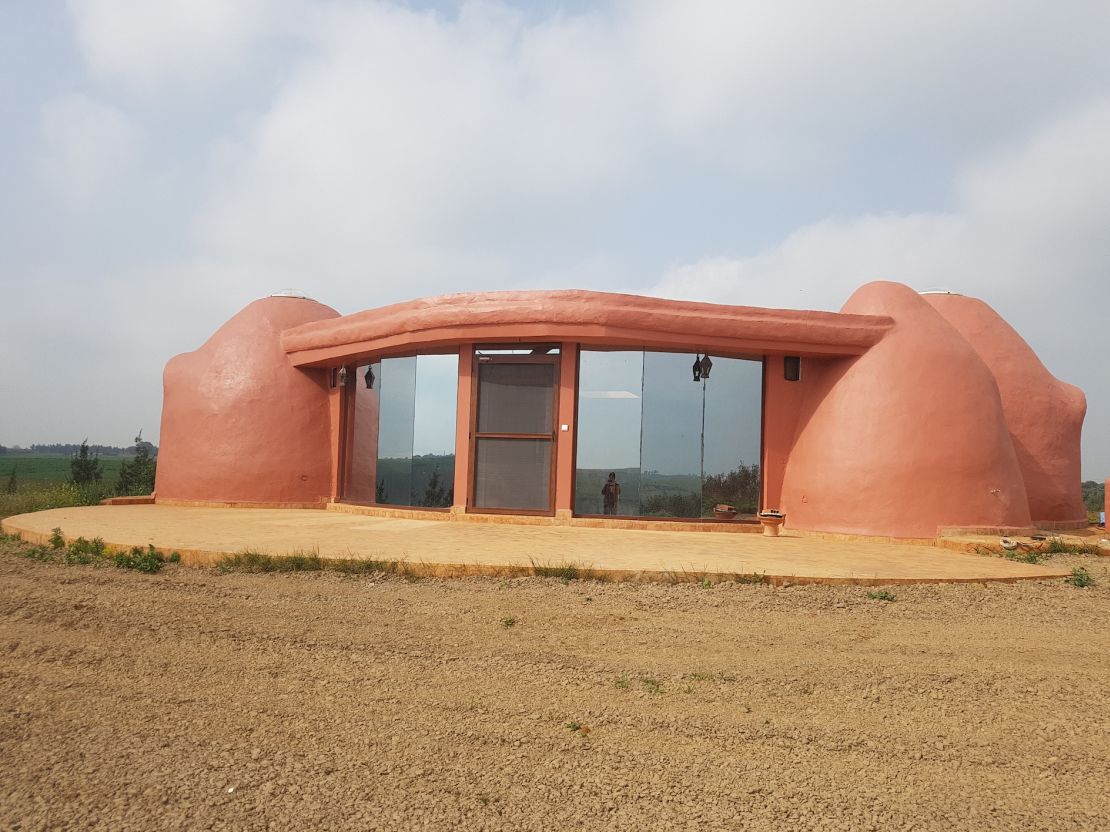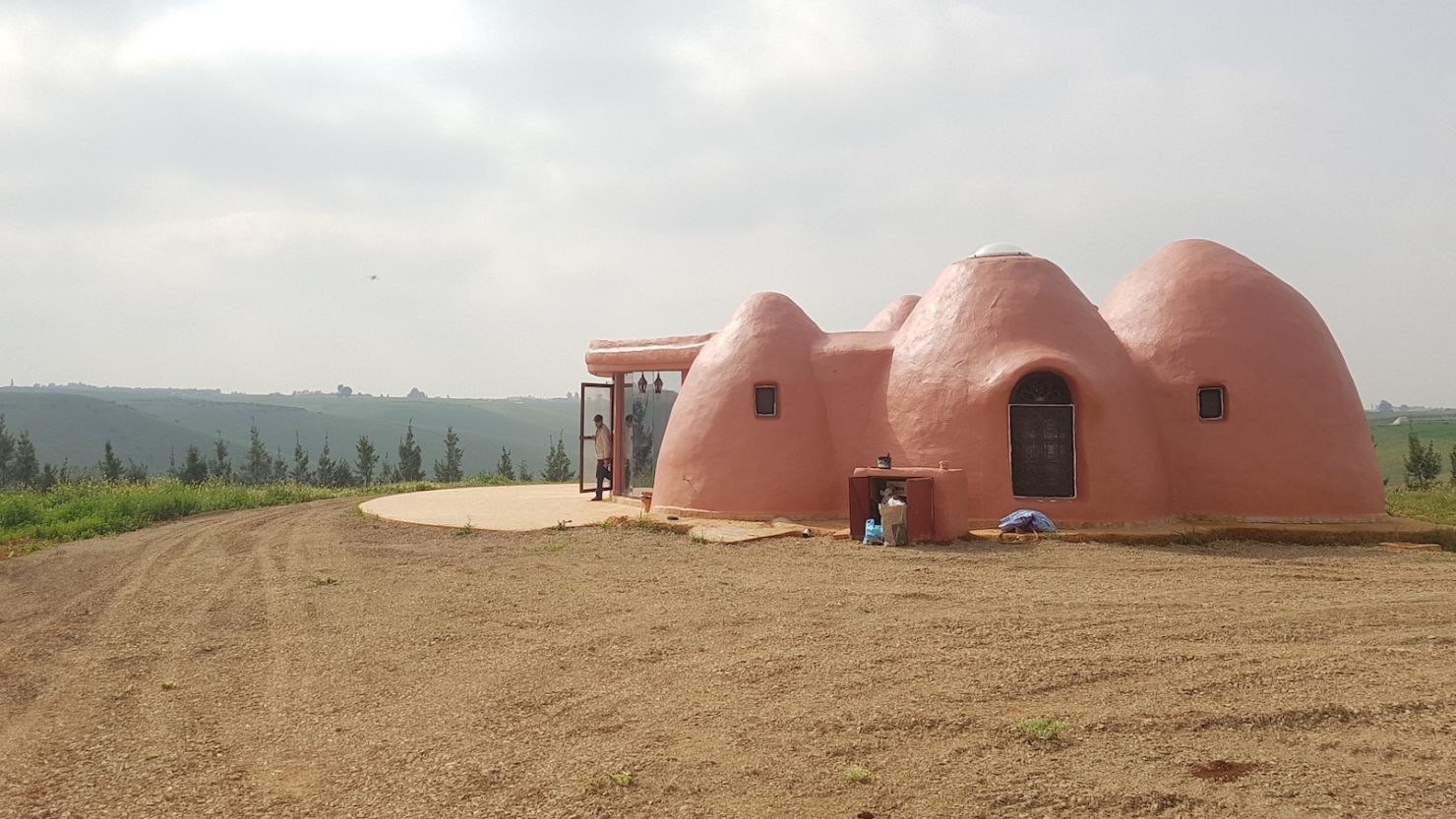In Morocco, a startup is building affordable homes using a material that is ubiquitous: soil.
Eco-dôme Maroc was founded in 2016. It applies local traditions to modern technology to construct dome-shaped buildings that it says are cheaper, more environmentally sustainable and more energy-efficient than regular concrete homes.
Founder Youness Ouazri says he discovered “a very rich tradition of earthen construction” used by previous generations while he was traveling around the country.
“We simply took this existing know-how and adjusted it to modern technologies to come up with a concept that is eco-friendly, cost effective and very rapid to implement,” he tells CNN.
Each home Eco-dôme builds is unique. Once the company receives an order, the first step is to analyze the soil composition on site to determine its suitability for construction.
Small quantities of lime or cement can be added for optimal performance, and thermal simulation models are run to ascertain the ideal thickness of the dome’s walls, so that it can absorb heat during the summer and release it during the winter. That means the building will use as little energy as possible for heating and cooling — sometimes none at all, says Ouazri, who trained as a civil engineer.
He adds that the eco-domes are much faster to build than a standard home. Prices range from around 2,500 Moroccan dirhams ($247) per square meter to 4,500 dirhams ($445), and can vary according to the soil and site. Ouazri says that can be a third cheaper than a standard home “mainly because we eliminate a big part of the raw materials that we’d need to acquire, since we are using local soil. We also eliminate the logistics associated with that, such as transporting materials to the site.”
Eco-dôme builds the homes using different techniques. One is called “superadobe,” which was devised in the 1980s by Iranian American architect Nader Khalili, and uses stacked polypropylene bags filled with soil. Other methods include using a wooden frame for the structures to obtain a rectangular, rather than round, floorplan.

The first Eco-dôme was completed in 2017. “It was a 775-square-feet house in a rural area near Rabat, the Moroccan capital, built for a client that uses it as a holiday house,” Ouazri says.
Since then, the company has built more than 100 domes across 40 different sites. The largest is a 2,700-square-foot cultural center in Agouim, 70 miles south-east of Marrakech, in an area with a harsh climate that swings from below freezing in winter to scorching hot in the summer.
‘Frugal innovation’
The company, which has received around $300,000 in investment to date and employs 17 people, has three main types of client, Ouazri says: “Land owners who want to build a primary or secondary home in the most ecological way possible; investors in rural tourism and eco-tourism; and local authorities and communities, to build schools or other infrastructure for education and healthcare.”
Eco-dôme now aims to start building in other countries and is looking at Tunisia and the Ivory Coast first.
Youssef El Ganadi, a professor of architecture at the International University of Rabat, who is not affiliated with Eco-dôme, says the project is an interesting “frugal innovation,” meant to make affordable homes for all social categories, and adds that it is sustainable.
However, he believes the uptake of the homes has been limited by a cultural barrier.
“Here in Morocco and in North Africa in general, many people have a mentality of wanting homes made of concrete, which they believe are more modern and robust,” he says. “That has limited the project to a niche, favored mainly by those with a certain sensibility to environmental causes and particularly for second homes.”
Ganadi also questions the earthquake resistance of superadobe domes. In September, Morocco was hit with a devastating quake that killed almost 3,000 people.
Ouzrai says attitudes are slowly changing. He adds that the Eco-dômes are built in compliance with local construction regulations, saying “buildings using superadobe or other earthen techniques are resilient to earthquakes” and that “four of our buildings were nearby the epicenter of the earthquake and stood still in front of it.”
“[Earth] lasts longer than industrialized materials,” Ouzrai says. “In certain regions in Morocco, we have buildings that were made thousands of years ago. With the appropriate maintenance, our domes can last forever.”
Editor’s Note: This story has been updated to correct the countries that Eco-dôme is looking to build in.






